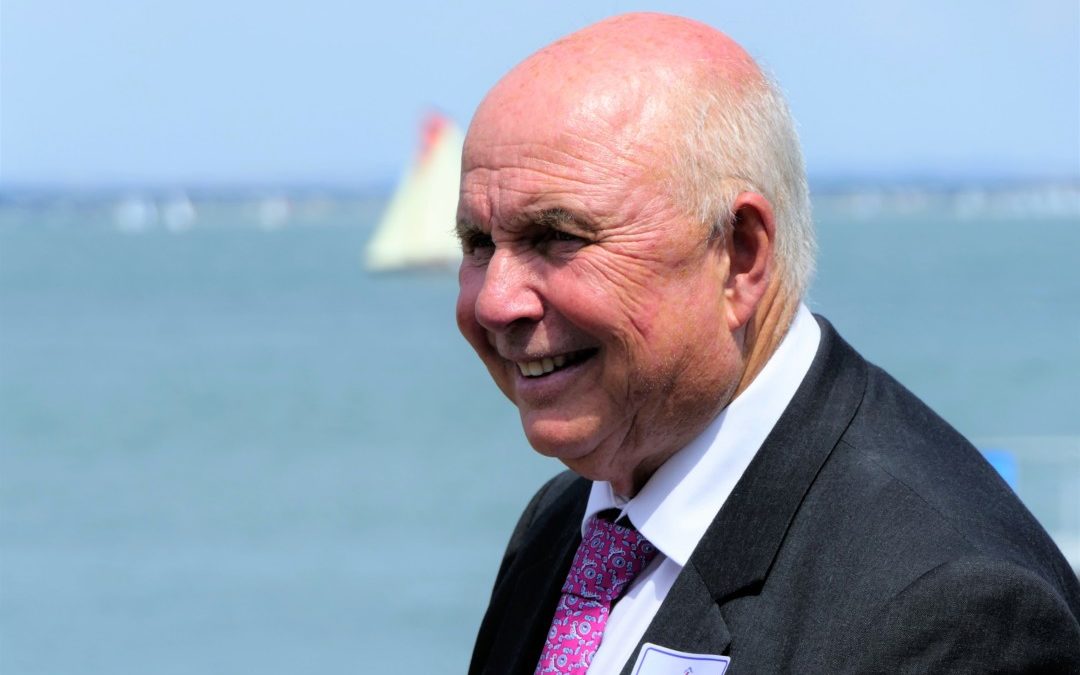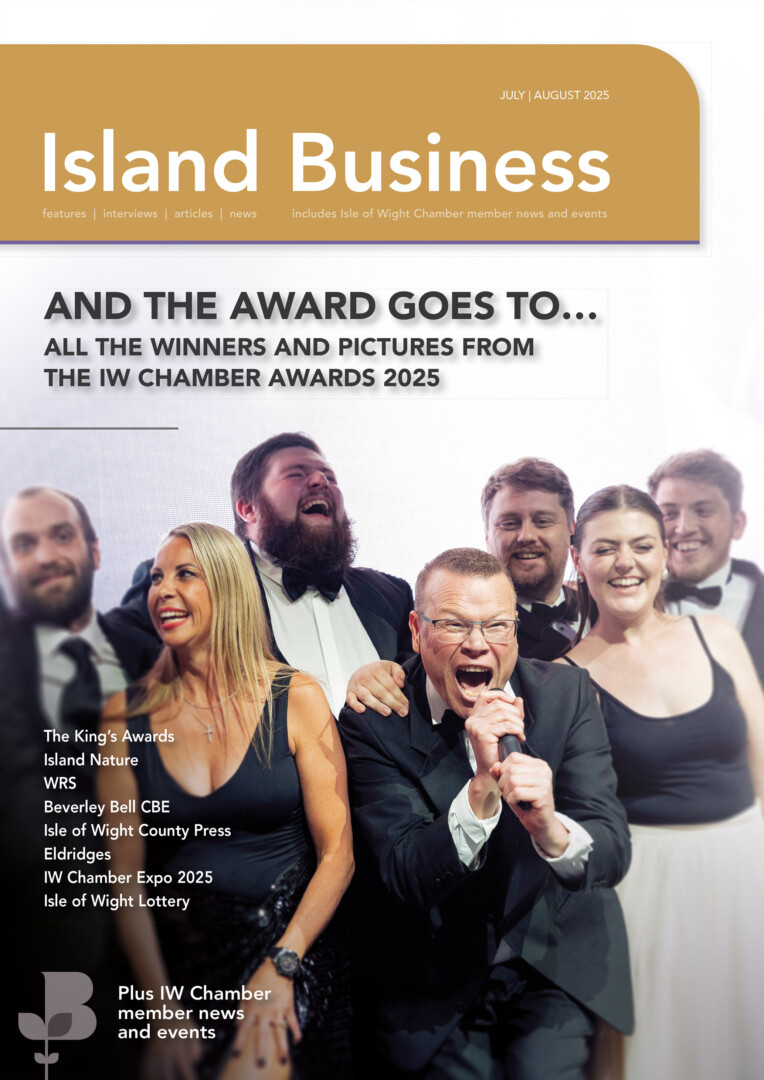East Cowes based Wight Shipyard Co has delivered its first multi-million pound export order for a 250-passenger river catamaran. The 39 metre Twin City Liner will operate a tourist service running on the River Danube between Vienna and Bratislava.
“Our reputation for building the finest high speed ferries in the world is spreading, making the prospects for Wight Shipyard look healthy,” says Wight Shipyard CEO Peter Morton. “Twin City Liner in Vienna, our first export order, follows domestic orders for Red Funnel and MBNA Thames Clippers, both of which we secured against international competition. Our strong order book is a big vote of confidence for our Isle of Wight shipwrights, the marine industry and indeed the UK economy.”
Wight Shipyard builds high speed vessels and aluminium boats for customers all over the world. Business is booming, with £50m orders that employ 150 Island people behind the Union Jack doors of the Columbine Building.
Wight Shipyard ended 2018 by being named Manufacturing Business Of The Year at the IW Chamber’s Business Awards where Peter Morton also received the President’s Award for Outstanding Contribution
Tom Stroud talks to founder and CEO Peter Morton.
You ended 2018 with a busy order book and two Isle of Wight Chamber Business Awards. Not a bad year!
Winning the Business Awards was a great accolade and we’re very proud of our manufacturing, which up until recently has been a declining industry in the UK. Some of the best boats in the world are being built here in East Cowes. There’s a long history of boat building here, with Samuel Whites building the first ever all-steel welded ship, and the hovercraft being built in this building alone. It’s a long history which we’re trying to rejuvenate.
We’re just negotiating the contracts which will see us through the next 18 months. There are something like 1,500 high speed ferries in the world, similar to the Red Jets that we built. Around 60% of those ferries are over 20 years old and they have a shelf life of about 20 years, so the potential for us is massive. I think we have got an advantage over virtually all high speed ferry yards in the world, in that we’ve got more experience in lightweight aluminium. The lighter the ferry is, the less fuel it uses and people are becoming very aware of fuel costs and also CO2 emissions.
Your business has grown rapidly in recent years. Was winning the commission for Red Jet 6 in 2015 a major turning point?
Yes. Red Jet 6 was the beginning of ‘built on the Island, by the Island, for the Island’. We had amazing support from Kevin George at Red Funnel who really did put his neck on the block with his board. It proved to be a fantastic success and I think that led on to the Thames Clippers contract and it led on to the Austrian order and Red Jet 7.
We started with 16 people and we have 150 working for us now, with about 15 apprentices, some of whom are into their third year already. I put up huge importance on creating skilled employment.
We’re very proud of our work and there are guys that work for me whose fathers built hovercraft and whose grandfather’s built flying boats in this building.
You build boats for Southampton and the Thames but there’s a huge international aspect to your business isn’t there?
I did some numbers the other day and with the fact that Red Funnel and Thames Clippers are not importing boats and the fact that we are exporting boats to Austria, Mexico and very soon to Malta, this little business here on the Isle of Wight will have made a £50 million impact on the UK’s balance of trade deficit. In simple terms if this country keeps buying more from abroad than we sell, we will go bust. I’m not particularly politically orientated one way or another but there is a massive issue with governments not supporting manufacturing industry.
I’m in two minds about Brexit. I think in the short term it’s going to be an issue. I think in the long term that it’ll be good for the UK to be able to be in charge of our own destiny. Our competition is in Australia, the Philippines and Vietnam, not in the EU, and the only other big high-speed ferry builder in Europe is in Norway also not in the EU. Therefore I’m not particularly concerned other than the short term issues of maybe getting materials.
How long will you be in this building for?
That’s a difficult question. The Chinese investor who had agreed the deal with Homes England has pulled out. I think he’s finally realised that the numbers don’t add up, that building expensive second homes and a ridiculously expensive marina in Cowes, in this market, is not a way to make money.
Currently the IW Council are in negotiation with Homes England in order to provide a secure base for marine industry on the island. I don’t feel under any pressure in the short term that we will be moved out. I have said before that we’re not going to move and I repeat that. We will not move until suitable other premises can be found. Within the constraints that the Council have to operate under, they’re certainly doing as much as they can and we are working together. This isn’t the perfect building for us. It’s not big enough really. In the long term what we would like is a purpose-built facility.
The problem with a shipyard is that high-speed ferries like the Red Jets are quite big boats physically but in value terms they’re not massively expensive. They’re very land hungry and you need a lot of area to build a relatively low value boat. From a landowner’s point of view he will make much more money renting out a big shed to Tesco or Sainsburys as a warehouse rather than to us as a shipyard. For me it comes down to balance. Do you want to have a 40,000 sq foot building employing a forklift driver and a labourer to load up the pallets, or do you want to employ 140 skilled employees?
That’s why a partnership with the Council is important because obviously the community and the general wealth of the local economy is better with a hundred and forty skilled jobs rather than two or three unskilled jobs. The landowner would rather let this building to Asda or Amazon because they get more money, they’ve got a FTSE 100 company behind them, and there’s less wear and tear on the building. People just need to be realistic. What sort of industry do you want here?



